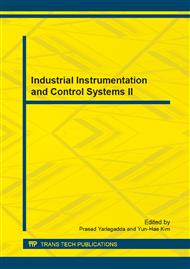p.2428
p.2433
p.2438
p.2443
p.2447
p.2451
p.2455
p.2460
p.2464
A Protocol to Enhance ZigBee Performance Base on Digging WiFi Traffic
Abstract:
The performance of ZigBee under interferences especially heavy WiFi hotpots has been more and more noticed in wireless sensor networks. Empirical results show that WiFi traffic contains abundant white space. It provides potential opportunities for ZigBee and WiFi to coexist in the same or overlapping channels. In this paper, we used the Pareto model to characterize the white space between WiFi frame clusters. Base on this model and a new ZigBee frame control protocol we developed, we gave out the best threshold of the model to achieve desired trade-offs between ZigBee link throughput and delivery ratio. According to experiments on the ZigBee Development Kits, the most suitable threshold of the Pareto model is 1.5ms. It could make a 10.9% throughput and 39.5% delivery ratio improvement.
Info:
Periodical:
Pages:
2447-2450
Citation:
Online since:
July 2013
Authors:
Keywords:
Price:
Сopyright:
© 2013 Trans Tech Publications Ltd. All Rights Reserved
Share:
Citation:


